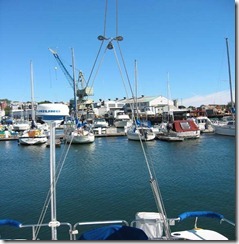Anti Siphon Valve Maintenance
Tag: maintenance water
There are 3 anti siphon valves on our boats and they each have a critically important function and, as such, it is vitally important that the valves operate properly. I believe that the majority, if not all, of our C320’s use the vented loop with “duckbill” valve as opposed to the check ball type valve. The good news is that these valves are easy to access and easy to maintain.
The anti siphon valve in the port lazarette is used to prevent water from siphoning through the cooling water seacock, through the engine cooling system, into the mixing elbow, and into the Aqualift muffler when the engine is not running.
The other two vented loops are located in the “medicine” cabinet over the marine toilet. One is used to prevent water from being siphoned through the seacock and into the shower sump and the other prevents water from siphoning from the seacock into the toilet.
On the top of each of the vented loop assembly, there is a threaded plastic cap with a small hole in it and in which is a small buna rubber one way valve that resembles a duck’s bill. The valve is normally closed, but if a vacuum is drawn within the loop, the duckbill valve (which is pointing down, away from the cap) opens, allowing air to enter.
Maintenance is simple:
1/ Remove the cap and insure that the hole is clear. Never plug the hole and don’t replace with a solid cap. If water leaks from the cap, it means the “duckbill” is missing or defective.
2/ Remove the duckbill valve, being careful not to tear it. Clean with nothing stronger than white vinegar. Do not lubricate and especially avoid contact with solvents and solvent-based lubricants, such as WD-40. (Ref: Art Bandy, Forespar)








